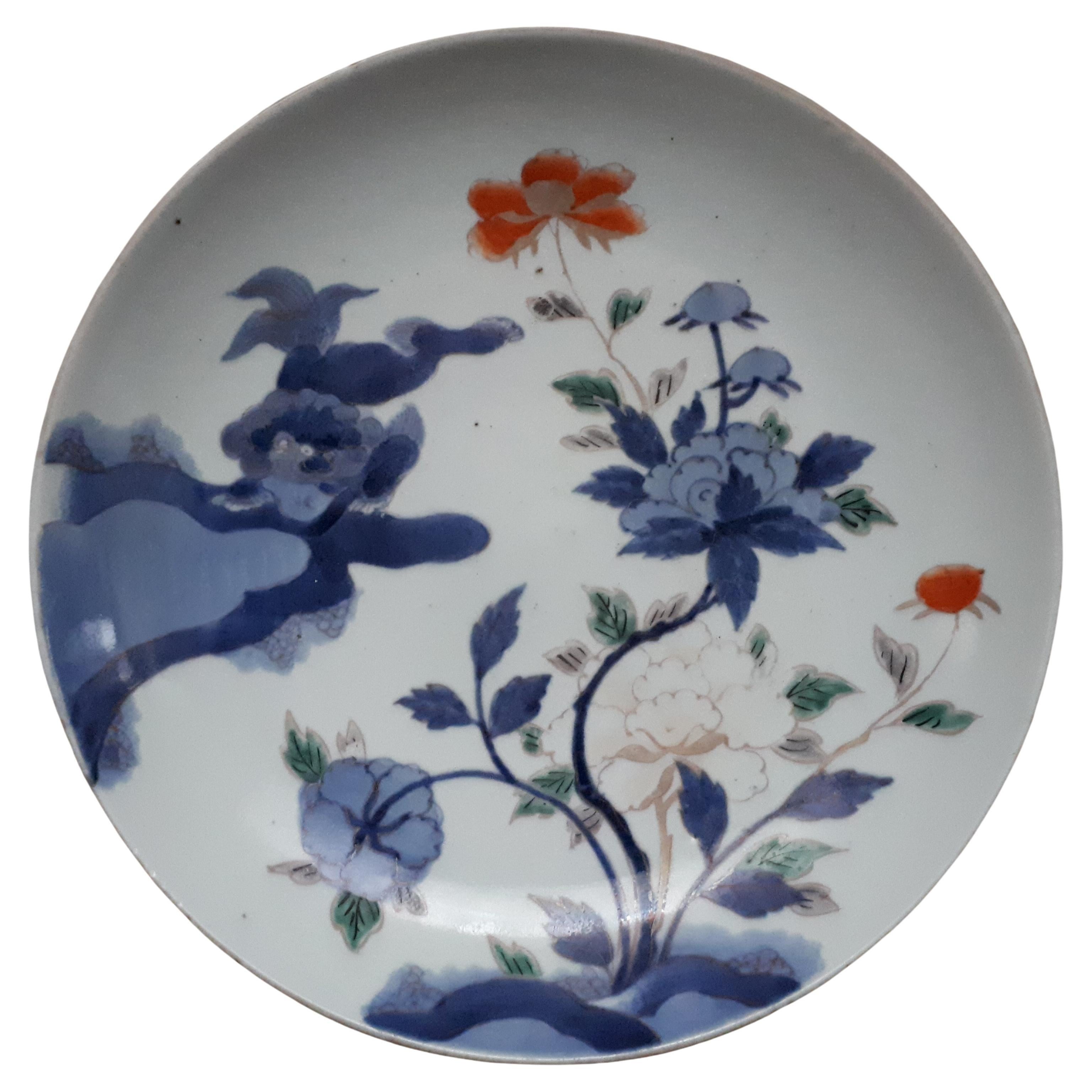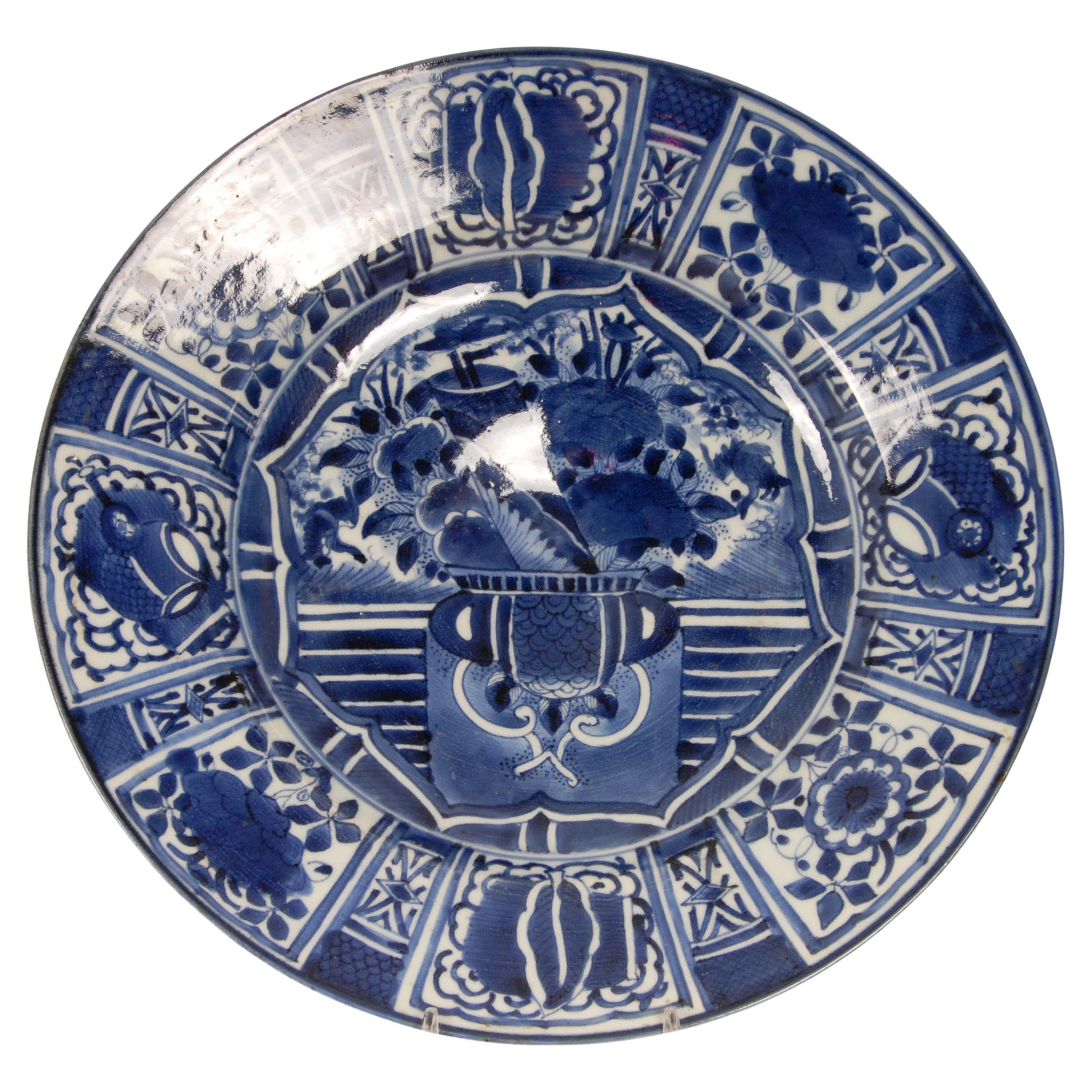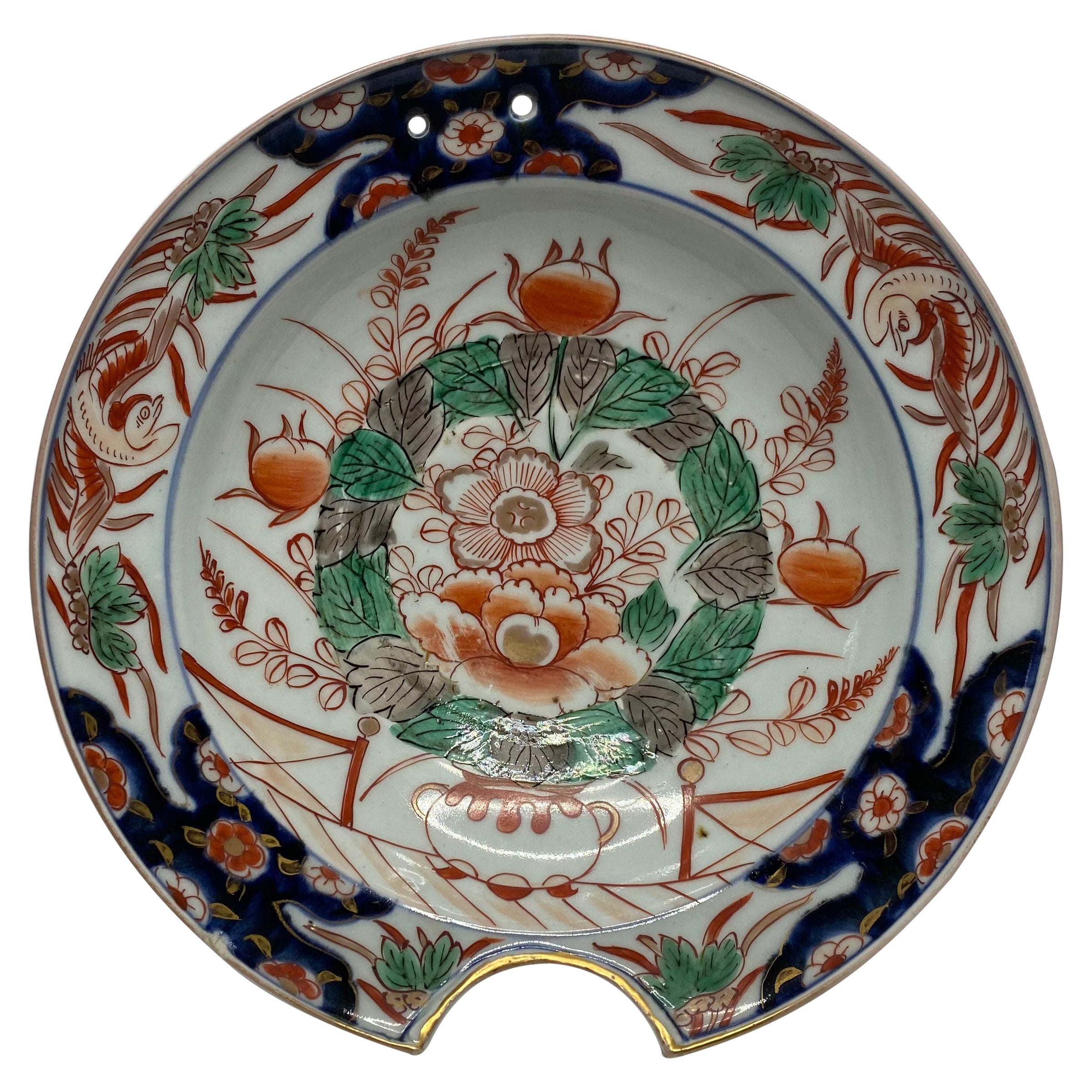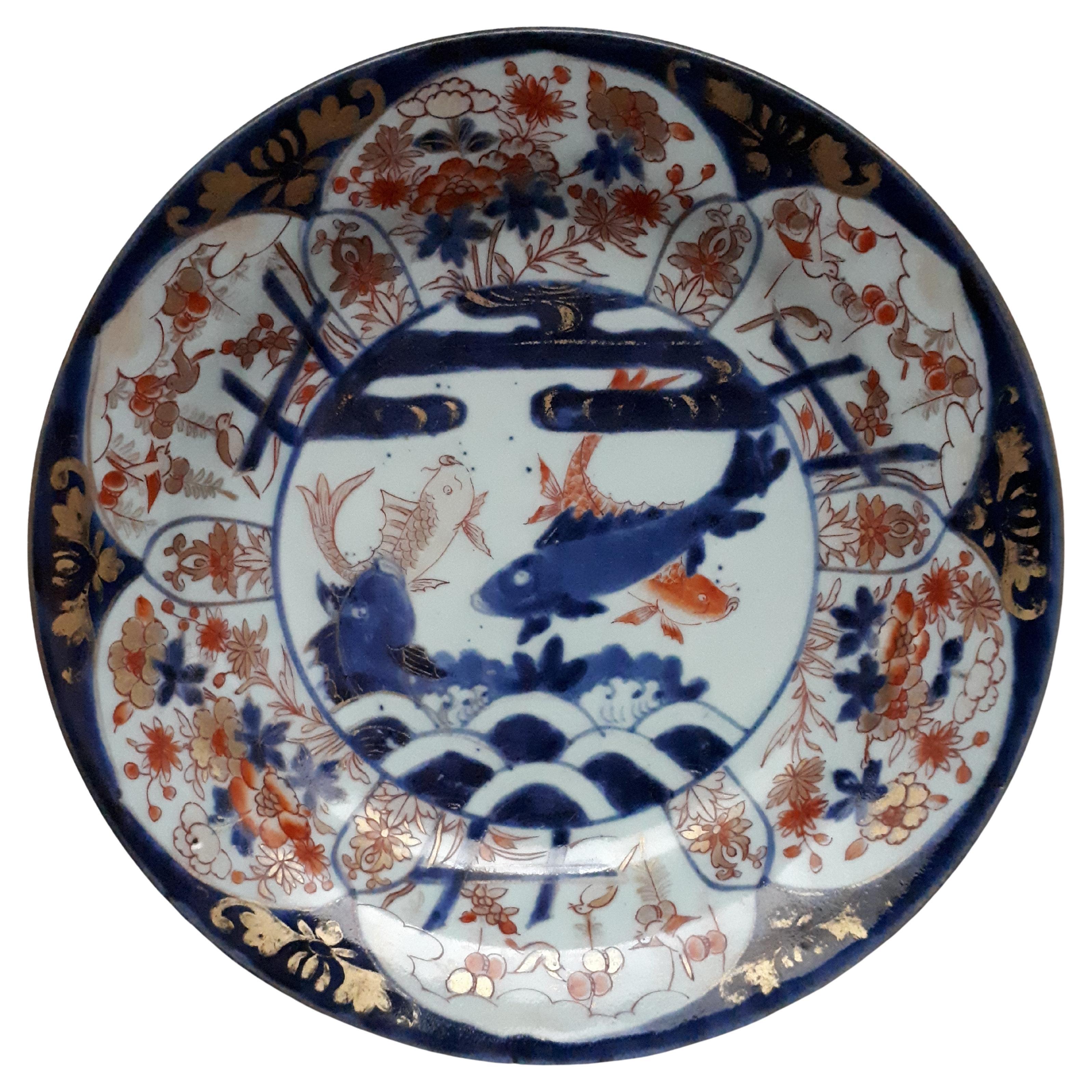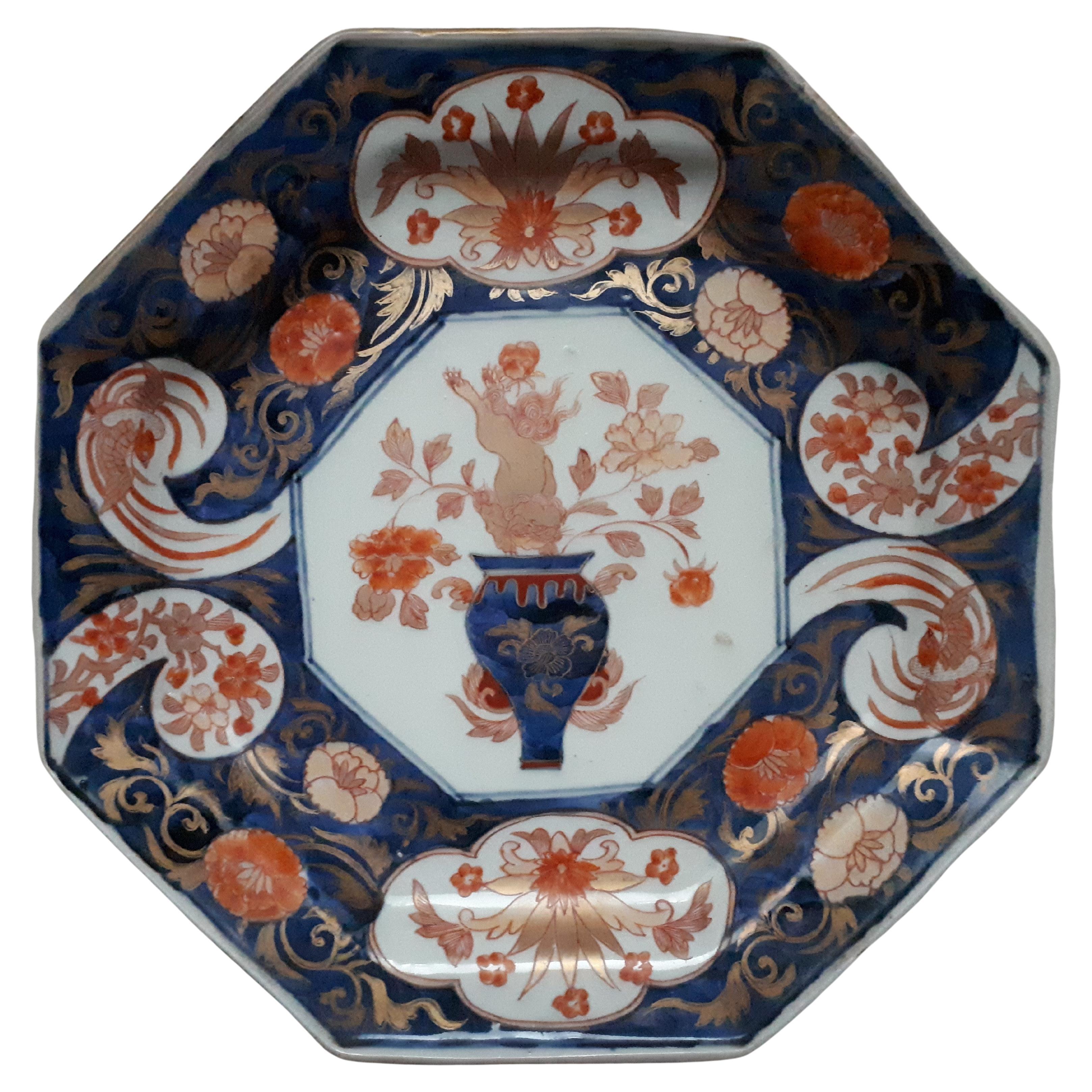Items Similar to A pair of Edo period ‘Scheveningen’ design Arita export dishes
Want more images or videos?
Request additional images or videos from the seller
1 of 5
A pair of Edo period ‘Scheveningen’ design Arita export dishes
About the Item
Each of these decagonal saucer-dishes is painted in underglaze-blue with a landscape of two Dutchmen and a boy warmly wrapped up and wearing large hats, two appear to be skating and one has a cow on a rope, in front of a hill fort flying a flag and the roofs of a town showing below the water line, possibly indicating the presence of dykes, the rims painted chocolate brown, the reverse with an underglaze seal mark and a paper sticker ‘Du Boulay Collection, P 297’ , one with a minor restoration. Japanese, circa 1700.
Anthony du Boulay was at Christie’s from1949 to1980 and Honorary Adviser on Ceramics to the National Trust, on the council of the Oriental Ceramic Society, chairman of the French Porcelain Society and of the DNHAS (Dorset County Museum). In one of his numerous publications there is an illustration of a very similar dish from the Ashmolean Museum ( John Ayers, J.V.G. Mallet, Oliver Impey, Anthony du Boulay and Lawrence Smith, catalogue, ‘Porcelain for Palaces: The Fashion for Japan in Europe 1650-1750’ , 1990. p113, fig. 67. An exhibition organised jointly with the British Museum in the New Japanese Galleries, 6 July to 4 November 1990). There is another in the Dr and Mrs. Roger G. Gerry Collection in the Metropolitan Museum, New York described as ‘Arita ware, Kakiemon type’ . Both these dishes have bracketed rims, probably influenced by silver dishes, whereas these examples have decagonal rims more in keeping with Kakiemon production. This design has traditionally been called ‘Scheveningen’ after a popular drawing by Frederick van Frijtom (1652-1702) of a fishing village on the Dutch coast near The Hague.
- Dimensions:Height: 2.5 in (6.35 cm)Diameter: 6 in (15.24 cm)
- Sold As:Set of 2
- Style:Edo (Of the Period)
- Materials and Techniques:
- Place of Origin:
- Period:1700-1709
- Date of Manufacture:Circa 1700
- Condition:Wear consistent with age and use.
- Seller Location:Lymington, GB
- Reference Number:1stDibs: LU973035748372
About the Seller
5.0
Recognized Seller
These prestigious sellers are industry leaders and represent the highest echelon for item quality and design.
Established in 1982
1stDibs seller since 2013
106 sales on 1stDibs
Typical response time: 4 hours
Associations
LAPADA - The Association of Arts & Antiques Dealers
- ShippingRetrieving quote...Ships From: Lymington, United Kingdom
- Return PolicyA return for this item may be initiated within 14 days of delivery.
More From This SellerView All
- A Japanese Edo period export porcelain chargerLocated in Lymington, HampshireA large Arita charger of circular form painted in rich cobalt blue under thick glossy glaze with a central vase of thee peony sprays on a platform, the e...Category
Antique Early 1700s Japanese Edo Ceramics
MaterialsPorcelain
- Pair of Meiji Period Satsuma Earthenware VasesLocated in Lymington, HampshireA pair of Meiji period Satsuma earthenware vases, each with applied elephant-mask handles, painted in overglaze pastel enamels and gilt with a continuous central frieze of sages and ...Category
Antique 1880s Japanese Meiji Ceramics
MaterialsEarthenware
- Pair of Edo Period Black and Gold Lacquer Samurai Helmet BoxesLocated in Lymington, HampshireA pair of Edo period black and gold lacquer Samurai helmet boxes (Hakko Bako), each of ribbed cylindrical form with a lid, a black lacquer interior,...Category
Antique 19th Century Japanese Edo Lacquer
MaterialsLacquer
- Unusual Showa Period Cloisonné VaseLocated in Lymington, HampshireAn unusual Showa period cloisonné vase, of squat ovoid form with continuous guilloche in turquoise and green enamels enclosing abstract designs in blue, y...Category
Vintage 1980s Japanese Showa Vases
MaterialsEnamel
- Showa Period Green Ground Cloisonne VaseLocated in Lymington, HampshireA Showa period green ground cloisonne vase, with two white and pink orchids, chrome mounts. Attributed to Ando. Japanese, circa 1950.Category
Vintage 1950s Japanese Showa Ceramics
MaterialsCeramic
- Large Meiji Period Satsuma Earthenware Floor VaseLocated in Lymington, HampshireA large Meiji period Satsuma earthenware floor vase, the of baluster form, painted in pastel overglaze enamels and gilding with two large sprays of flowers including prunus blossom, ...Category
Antique 1870s Japanese Meiji Ceramics
MaterialsEnamel
You May Also Like
- Japanese Arita porcelain dish with peony design, Japan Edo periodLocated in Saverne, Grand EstArita porcelain dish with decoration of a shishi among peonies. Apocryphal Chenghua mark on reverse. Japan, 18th centuryCategory
Antique 18th Century Japanese Edo Ceramics
MaterialsPorcelain
- 17th Century Arita Dish Blue White Export Porcelain Charger Ming Edo PeriodBy 1616 / Arita Japan, Arita, DelftLocated in Wommelgem, VANLarge 17th Century Japanese Edo Period Arita dish Chinoiserie blue and white Wanli Kraak Charger Material: Ceramic, porcelain Design: Arita, Ming Dynasty, Wanli style, Chinoiserie Style: Ming, William and Mary - Louis XIV Baroque, Antique, Asian antique, Oriental Origin: Japan, Arita, 17th century Colors: Blue and white, the blue is unbelievable fabulous Decor: Chinoiserie, Chinese Wanli style known as "kraakdish" Description: Large 17th Century ceramic...Category
Antique 17th Century Japanese Edo Ceramics
MaterialsCeramic, Porcelain
- Imari porcelain barbers bowl, Arita, Japan, c. 1700. Edo Period.By AritaLocated in Gargrave, North YorkshireJapanese Arita porcelain barbers bowl, c. 1700, Genroku Period. Well painted in Imari colours, with an exuberant display of flowering plants, in a jardini...Category
Antique 17th Century Edo Ceramics
MaterialsPorcelain
- Japanese Dish In Arita Porcelain With Imari Decor Of Carps, Japan Edo PeriodLocated in Saverne, Grand EstArita porcelain dish decorated with carps. Sought-after model, rare in this condition ! Japan, late 17th - early 18th century.Category
Antique Late 17th Century Japanese Edo Ceramics
MaterialsPorcelain
- Japanese Arita Porcelain Dish With Imari Shishi Decor, Japan Edo PeriodLocated in Saverne, Grand EstArita porcelain dish decorated with a shishi jumping in a vase. Excellent condition ! Japan, 18th century.Category
Antique 18th Century Japanese Edo Ceramics
MaterialsPorcelain
- Antique Kraak Edo Period 1680-1690 Japanese Porcelain Huge Charger AritaLocated in Amsterdam, Noord HollandSharing with you this very nice edo period, 1680-1700, example. With a garden floral scene. Marked at base: made in the Hua Qing period of the great Ming Dynasty Arita ware, also known as Arita-yaki, has its origins in 1616, when a Korean farmer, Yi Sam-pyeong, discovered white clay kaolin in Arita and used it to create Japan’s first porcelain. Arita was the first place to produce ceramics in Japan. After the discovery, a number of kilns opened in the area and it soon became a source for Japanese export porcelain...Category
Antique 17th Century Japanese Edo Ceramics
MaterialsPorcelain
Recently Viewed
View AllMore Ways To Browse
Enamel Lotus
18th Century Bamboo
17th Century Small Chinese Plates
Raku Chawan
Blanc De Chine Ming
Chinese Blue And White Tulipiere
Qing Plate
Chinese Long Eliza
Chinese Shipwreck
Japanese Sake Server
Koie Ryoji
17 Century Chinese Plate Kangxi
Japan Huge Antique Brilliant
Kutani Sleeping Cat
T Nakayama
Vintage Chinese Mudman
Kraak Wanli
Wanli Kraak Porcelain
